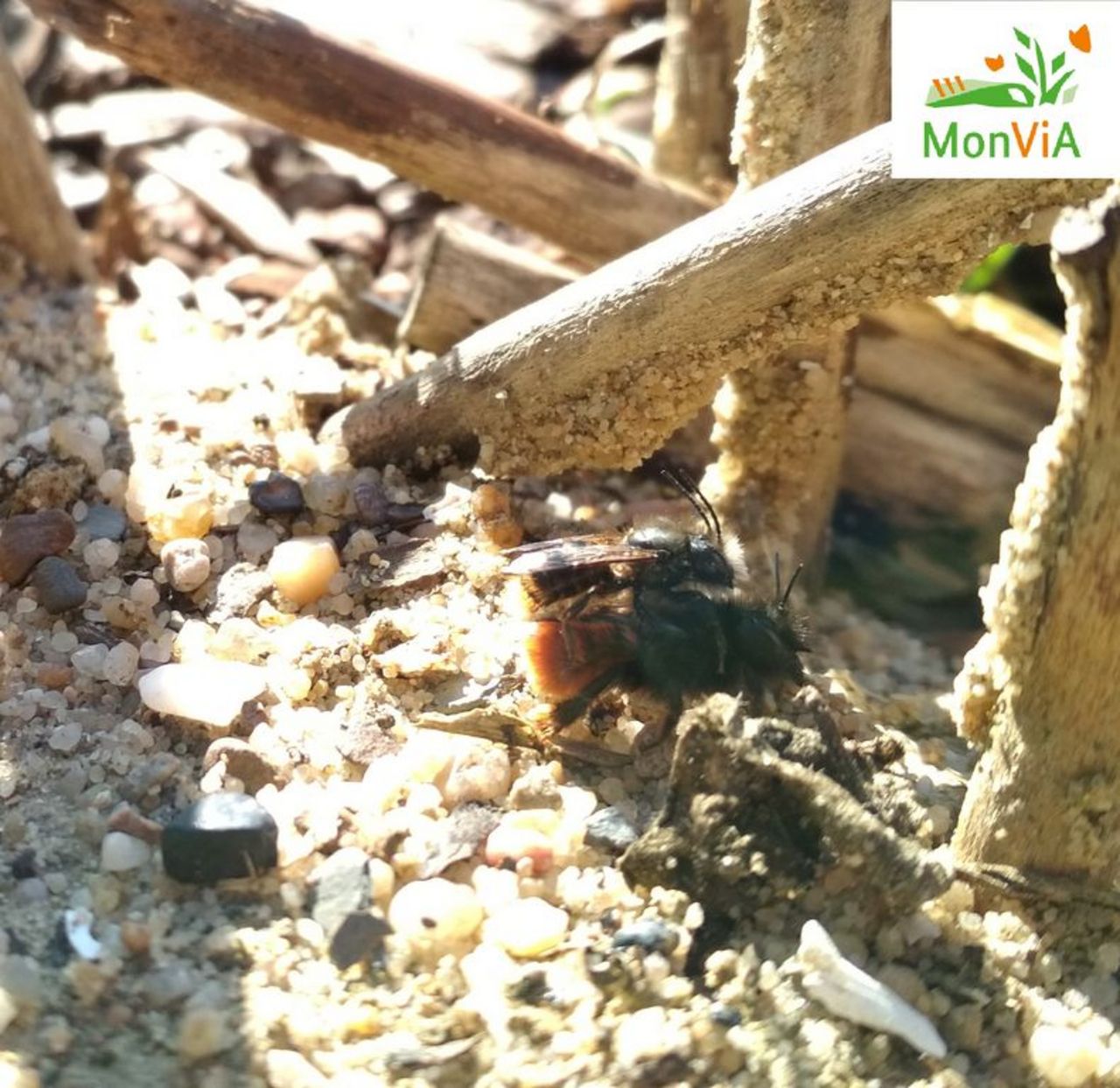Project
Development of standardised sampling methods for cavity-nesting wild bees

Development of standardised, nonlethal sampling methods for cavity-nesting wild bees
Changes in land-use and farm management have led to a sharp decline in wild bees. In order to understand the underlying cause-effect relationships for this decline, standardised nonlethal sampling methods are being developed for a wild bee monitoring scheme.
Background and Objective
Wild bees can be recorded in a variety of ways in the field. Common methods include transect walks or the installation of pan traps. In comparison to these methods, trap nests enable us to quantify trophic interactions between wild bees, wasps and parasitoids beyond recording species composition. In addition, trap nest material can be used to draw conclusions about food resources and to estimate the effects of pesticide residues on the vitality of wild bees.
Therefore, trap nests are predestined for the detection of above-ground-nesting wild bees in the context of farmland biodiversity monitoring. However, a standardisation of the trap nest material to be offered is still required in order to guarantee comparable sampling conditions.
The trap nest to be developed should serve in the long run as a standardised sampling method for a wild bee monitoring in agricultural landscapes. The following basic requirements are to be considered when developing the trap nest: Standardisation of the trap nest material, nonlethal sampling methods and minimum of maintenance effort.
Approach
The prototype of a trap nest is to be created and tested, which combines existing trap nest elements or rather develops them further in such a way that they offer optimal nesting conditions for a maximum of wild bee species occurring in open agricultural landscapes. In addition, the prototype is to be supplemented by a recording module which will automatically record wild bees and their daily and seasonal activities. The aim is to examine whether and to what extent it is possible to determine the species and abundances based on automated image identification.
The current status of the project and the locations of the nesting aids can be viewed at wildbienen.thuenen.de.
Thünen-Contact

Involved Thünen-Partners
Funding Body
-
Federal Ministry of Food und Agriculture (BMEL)
(national, öffentlich)
Duration
7.2019 - 12.2024
More Information
Project status:
ongoing

![[Translate to English:] [Translate to English:]](/media/_processed_/4/0/csm_Titel_Ant_Plot_1c3363e3f7.png)
![[Translate to English:] [Translate to English:]](/media/_processed_/b/3/csm_Titel_93px_Ant_Plot_0ef6a20d79.png)



